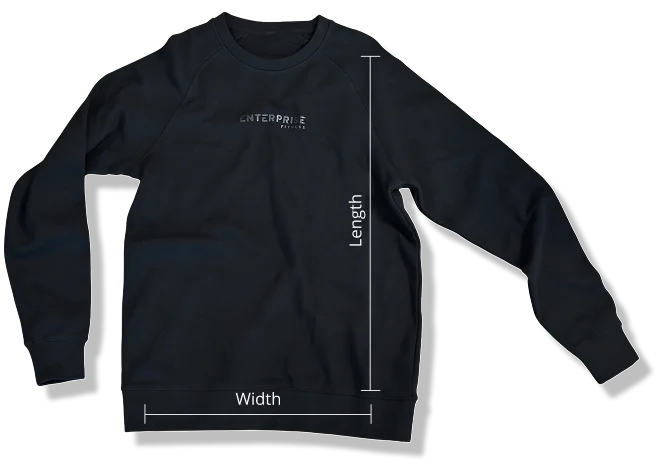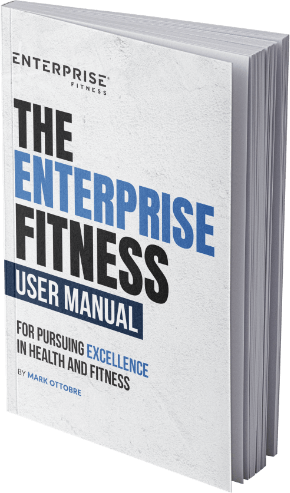Hidden behind modern health claims could be one of the biggest culprits sabotaging your fitness goals, high-fructose corn syrup (HFCS).
Well, at least that would be true if you lived in America.
Australia doesn’t use HFCS as widely as the US but it’s still sneaking into our diets through imported products and processed foods.
So I wanted to put together this article for Aussie wellness-minded people and fitness lovers alike, so you can understand how HFCS affects your body, where to look for it and how to avoid it.
What Is High-Fructose Corn Syrup?
HFCS is a sweetener made from corn starch. Through enzymatic processing, it’s turned into fructose, a sweeter sugar that helps manufacturers cut costs while keeping food ultra-palatable.
And yes!
Fructose is in fruit, but that doesn’t mean you need to stop eating fruit.
Fruit contains fibre, antioxidants and other nutrients. The problem with HFCS is that it’s ‘all fructose’.
Take, for example, an apple. For a medium apple, 160 grams, there’s about 8 to 10 grams of fructose. Think of this as two teaspoons. Most people don’t binge on apples.
Compare that with the American version of Coca-Cola. In one Can of cola, you’re getting 24 grams of fructose.
The two most common types of HFCS:
- HFCS-55 (55% fructose, 45% glucose) – mostly used in soft drinks.
- HFCS-42 – used in baked goods, sauces, cereals, etc.
While Australia primarily uses cane sugar, HFCS still appears in many imported or mass-produced items, like soft drinks, candy, snack bars, and even sauces.
Fructose vs. Glucose: Why It Matters
All sugars aren’t created equal. Fructose and glucose affect your body in very different ways:
- Glucose is metabolised throughout the body, triggers insulin release, and provides usable energy for muscles and organs.
- Fructose is processed almost exclusively by the liver and doesn’t stimulate insulin or leptin (the “I’m full” hormone), making it far more likely to be stored as fat, especially visceral fat.
When the liver is overloaded with fructose, it converts it into fat in a process called de novo lipogenesis. This can lead to non-alcoholic fatty liver disease (NAFLD) and elevated triglyceride levels, both of which are serious risks for cardiovascular health and metabolic disease.
Even worse? Fructose doesn’t satisfy hunger, which means you’re likely to overeat, leading to excess calorie consumption, which is not great if you’re trying to lean out or maintain energy for training.
The Real Dangers of HFCS
Let’s break down how HFCS can derail your health and fitness:
1. Fatty Liver & Metabolic Dysfunction
Studies have shown that just 2 weeks of high-HFCS consumption can increase the fat on your liver.¹ This not only impacts metabolism but also reduces your liver’s ability to regulate blood sugar and burn fat efficiently.
2. Insulin Resistance
HFCS may contribute to the development of insulin resistance, a precursor to type 2 diabetes. When insulin sensitivity drops, your body struggles to shuttle glucose into muscles for energy, making recovery and fat loss more difficult.² You also need to factor in that HFCS is added to foods that are highly palatable and easy to eat, which may result in excessive calories.
3. Increased Triglycerides
HFCS may increase triglycerides, which increases your risk of heart disease and weight gain.³ High triglycerides can also impair cardiovascular health.
4. Increased Appetite & Weight Gain
Unlike whole foods like fruit that contain fibre, foods containing HFCS usually don’t regulate appetite hormones as effectively. This leads to more cravings, frequent snacking, and ultimately, higher caloric intake, a recipe for unwanted fat gain.⁴
HFCS vs. Other Sweeteners: What’s the Healthiest Choice?
Let’s break down common suggested alternatives to fructose:
| Sweetener | % Fructose | Key Notes |
| HFCS-55 | ~55% | Found in many sodas and processed foods |
| Sucrose (table sugar) | 50% | Nearly identical in impact to HFCS |
| Honey | ~40% | Contains antioxidants, but is still high in sugar |
| Agave Syrup | ~70–90% | Higher in fructose than HFCS |
| Fruit (whole) | ~5–10% | Comes with fibre, water, and nutrients |
In short, HFCS and sugar are equally harmful in excess. You simply must equate calories with either option. As always, you should be meeting a protein goal first by eating real food.
Honey and agave may seem more natural, but they still contribute to metabolic issues when overconsumed. The safest sweetener, if I had to pick? I would explore monk fruit, stevia and xylitol. I would, however, discourage thinking of them as a ‘free’ food option. They should be used to add flavour, not because you are bored and want to waste time by just ‘eating something.’
Where HFCS Hides in Your Diet
Even if you avoid soft drinks, HFCS can sneak into:
- Breakfast cereals
- Snack bars and protein bars
- Flavored yogurts
- Bottled sauces (BBQ, ketchup, sweet chili)
- Baked goods and “healthy” muffins
- Canned or bottled drinks (even iced teas and smoothies)
In Australia, these are found in imported food products. As always, read labels if you’re unsure. The first ingredient listed is always the main ingredient.
How to Avoid HFCS and Optimise Your Body for Performance, Recovery, and Fat Loss
If you’re serious about training, you need to treat your body like a high-performance engine. Just like elite athletes don’t fuel with cheap additives, you shouldn’t either.
HFCS is the nutritional equivalent of dirty fuel. It clogs your metabolism, triggers fat gain (especially around your liver and waist), interferes with your hormones, and undermines your results, whether you’re trying to build lean muscle, burn fat, or simply stay energised.
Here’s how to structure your lifestyle to eliminate HFCS and build a body that performs at its best.
Train Your Taste Buds Like You Train Your Muscles
Cutting back sugar takes consistency, but your body adapts. Within weeks, fruit will taste sweeter and artificial snacks will lose appeal.
How to reset your palate:
- Gradually reduce added sugars each week or go cold turkey. I use both approaches depending on the client.
- Replace foods with HFCS or refined sugar with whole foods that take time to prepare. Simply preparing food can slow down a potential binge or snack frenzy.
- Try, but don’t rely on artificial sweeteners like monk fruit, stevia or xylitol to wean yourself off ‘the taste of something sweet’.
Watch the Calories you Drink – Even the ‘Healthy Ones’
Drinks are a major source of added sugar and HFCS. Even juices and flavoured waters can contain hidden sweeteners. If you’re drinking your calories, an easy win is to switch this up for real food.
Avoid:
- Soft drinks, iced teas, and sports drinks
- Bottled smoothies and energy drinks
- Always read labels and check the carb content. If you’re going to drink soft drink (not that I recommend you do), I would at least make it sugar-free.
Better options:
- Water
- Filtered water
- If in doubt, water
But I get, I’m boring. So if you wanted to add a little spice:
- Sparkling water with lemon or mint
- Black coffee or green tea (watch caffeine intake and follow my caffeine rules)
- Eat, don’t drink your calories.
Track Progress and Stay Accountable
The best way to hit your goal is to get a guide and stay accountable. If you need a hand staying on track, reach out to us.
If you want to learn more about my nutrition philosophies, grab a copy of my book, The Enterprise Diet. Now available on Audible.
Summary
High-fructose corn syrup (HFCS) might be less common in Australia, but it still sneaks into our diets through imported products and processed foods. For anyone focused on fitness or wellness, you want to avoid it simply because most of the foods that contain it are nutritionally void and calorie-dense anyway, and very easy to eat, which can lead to overconsumption.
References:
- Stanhope KL, Havel PJ. Fructose consumption and the potential mechanisms of weight gain and metabolic dysfunction. Am J Clin Nutr. 2009.
- Lustig RH. Fructose: metabolic, hedonic, and societal parallels with ethanol. J Am Diet Assoc. 2010.
- Tappy L, Lê KA. Metabolic effects of fructose and the worldwide increase in obesity. Physiol Rev. 2010.
- Teff KL, Elliott SS, et al. Dietary fructose reduces circulating insulin and leptin, attenuates postprandial suppression of ghrelin, and increases triglycerides in women. J Clin Endocrinol Metab. 2004.
- Australian Bureau of Statistics. Australian Health Survey: Consumption of Added Sugars.
- CSIRO. Sugar and Sweetener Use in Australia.
- Harvard Health Publishing. The truth about sweeteners.
- LiveLighter Australia. Sugar vs HFCS – what’s in our food and drink?.
- Duong V. Are natural sweeteners really healthier? Dietitian’s Blog, 2023.
Ready to Transform Your Health?
At Enterprise Fitness in Melbourne, we provide personalised nutrition and training programs to help you achieve lasting results. Book a free consultation today and take the first step towards a healthier you.
Related posts





